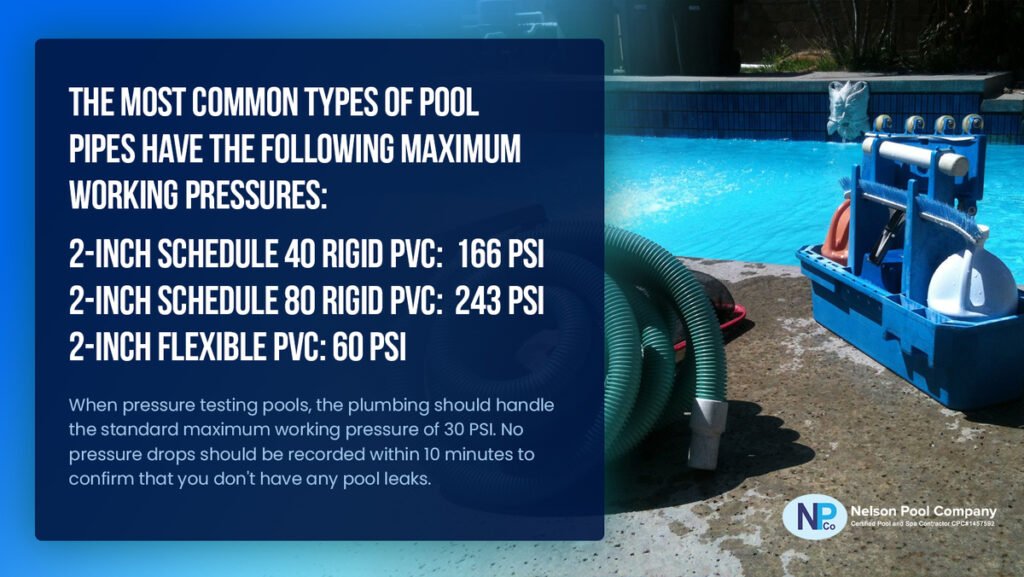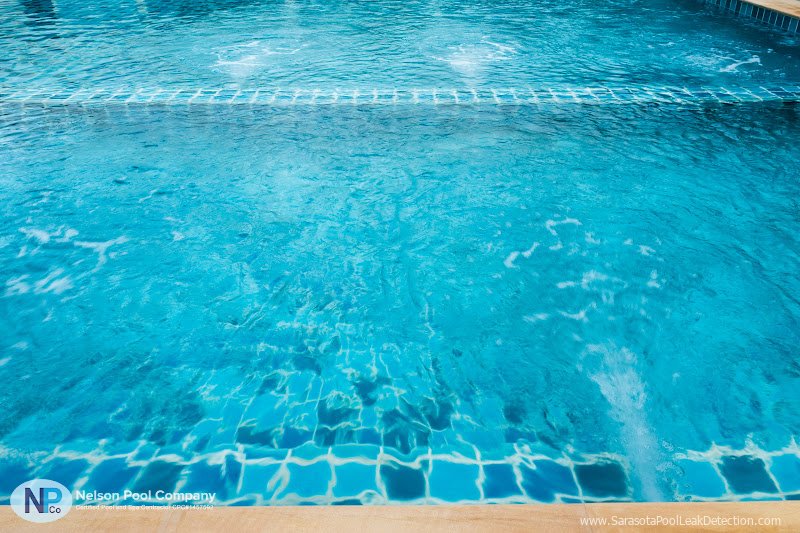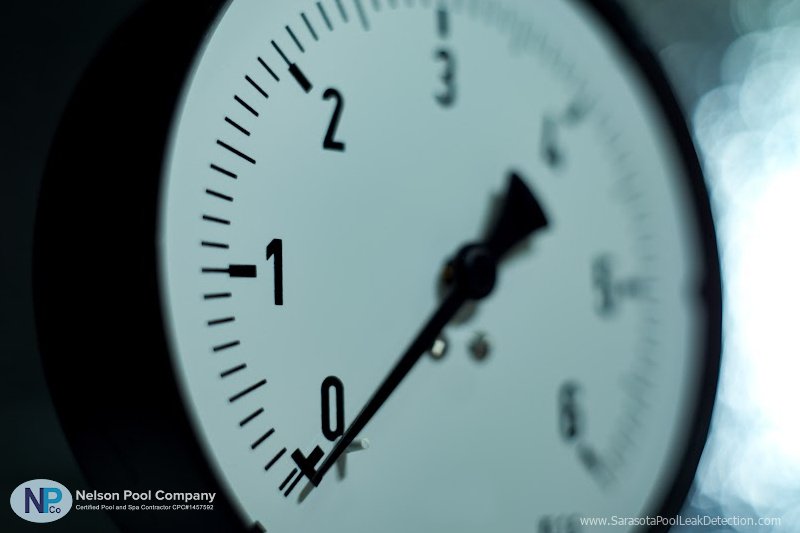When it comes to pool plumbing, one of the most important aspects is ensuring that the pressure is correct.
If the pressure is too high, it can cause damage to the pipes and equipment. If the pressure is too low, the water will not be able to circulate properly, and the pool will not be clean.
So what pressure should pool pipes be under?

The most common types of pool pipes have the following maximum working pressures:
- 2-inch schedule 40 rigid PVC: 166 PSI
- 2-inch schedule 80 rigid PVC: 243 PSI
- 2-inch flexible PVC: 60 PSI
When pressure testing pools, the plumbing should handle the standard maximum working pressure of 30 PSI. No pressure drops should be recorded within 10 minutes to confirm that you don’t have any pool leaks.
This article will discuss what factors you need to consider when determining pipe pressure for your swimming pool.
Pool Plumbing System

Your plumbing system is responsible for circulating water throughout the pool.
It consists of the main pool pump, filter, heater, and smaller pipes and fittings.
The pool pump is the heart of the system, and it circulates water through the filter and heater before sending it back to the pool.
The filter helps to keep the water clean and clear, while the heater keeps it at a comfortable temperature.
The pool plumbing system is under a lot of pressure – literally. The pump pressurizes the water in your pool, which can strain the pipes and fittings.
Over time this will cause leaks.
That’s why it’s crucial to have your pool plumbing system inspected and pressure tested regularly.
A pressure test will help to identify any weak points in the system so that they can be repaired before they cause any problems.
You can learn more about how long pool plumbing should hold pressure here.
Please include attribution to https://sarasotapoolleakdetection.com with this graphic.
Types of Pool Pipes
There are two main types of pool pipes: rigid PVC and flexible PVC. Each one has its working pressure threshold.
Rigid PVC pipes are less likely to warp or break under pressure, but they are more expensive and more challenging to install.

Flexible PVC pipes are less expensive and easier to work with, but they have a lower working pressure threshold and are more likely to break or leak under high pressure.
Knowing the difference between these two types of pipes can help you make informed decisions about your pool’s plumbing.
Rigid PVC Pipe: The schedule 40 rigid PVC pipe is a standard pipe used in pool plumbing. These pipes are incredibly strong.
Schedule 40 rigid PVC pipes are two inches in diameter and have a pressure rating of 166 psi.
Schedule 80 PVC pipes have the same diameter but are thicker than Schedule 40. It can handle higher pressures at 243 PSI, but it’s not commonly used in pools since they’re more expensive.
Rigid PVC pipes have some drawbacks. They can be challenging to install and are not compatible with all types of fittings. These PVC pipes are not as flexible as other types of PVC pipes, making them less able to withstand ground movement.
Despite these drawbacks, rigid PVC pipes remain a popular choice for pool plumbing due to their strength and durability.
Flexible PVC pipes: Flexible PVC pipe is a type of plastic piping used in various applications. It is the most common type of PVC pipe used in pool plumbing because it’s easy to cut and install.
Two-inch flexible PVC pipes have a maximum operating pressure of 60 PSI.
However, flexible PVC pipe is unsuitable for all applications as termites and insects can damage it. It’s not suitable for locations with scorching and sunny weather.

Pressure Testing Pools
Pressure testing your pool pipes is a great way to check for leaks. By pressure testing the system, you can identify any areas where water is escaping from the system.
This can prevent costly repairs down the road.
To pressure test your pool pipes, follow these steps:
1. Ensure that the pool pump is turned off and all the valves are closed.
2. Connect a pressure gauge to the system and open the valve.
3. The pressure should build until it reaches 10-30 psi. Once the pressure gauge reaches the recommended pressure, check it every ten minutes to ensure it doesn’t drop. If it does, there may be a leak in your pool. Call a professional to help you identify and repair the leak.
5. When you’re finished pressure testing, slowly release the air from the pressure gauge, so it doesn’t damage your pool.
Pool repair issues?
Call (561) 570-1269 now, and we will schedule a pool repair and renovation company in your area to reach out to you. They will schedule a time convenient for you to stop by and give you a bid on the repairs.
Or you can fill out this form, and we will have the best pool renovation company in your area contact you!
